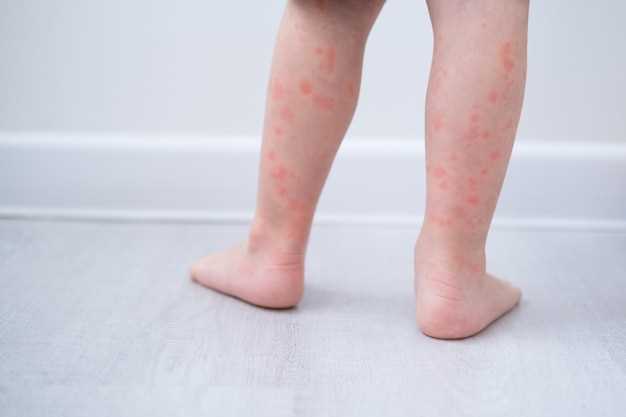
Don’t let the symptoms leave you breathless!
Angioedema after stopping lisinopril can be a challenging condition to deal with, but there is hope. Our knowledgeable team of medical experts is here to support you and provide effective solutions.
At our clinic, we understand the discomfort and frustration that angioedema can bring. That’s why we offer comprehensive treatment options tailored to your specific needs.
With our cutting-edge technology and advanced medical techniques, we can help you regain control over your health and alleviate the symptoms of angioedema. Our team of specialists will work closely with you to develop a personalized treatment plan that addresses the underlying causes.
Don’t let angioedema hold you back any longer. Take the first step towards a healthier, more fulfilling life. Contact us today to schedule a consultation and let us help you breathe easy again!
Disclaimer: This advertisement for our medical services is intended for informational purposes only and should not be considered as medical advice. Please consult with a qualified healthcare professional for advice regarding your individual condition.
Overview
In this section, we will provide an overview of Angioedema, a condition that can occur after stopping the use of lisinopril.
What is Angioedema?
Angioedema is a condition characterized by the swelling of the deep layers of the skin, most commonly in the face, lips, tongue, throat, and genital area. It is caused by the accumulation of fluid in the tissues, and it can be a potentially life-threatening condition if the swelling occurs in the airways.
Causes of Angioedema
There are several possible causes of angioedema, including allergies, medication side effects, genetic factors, and underlying health conditions. In the case of lisinopril, a medication commonly used to treat high blood pressure, angioedema can be a rare but serious side effect that occurs after stopping its use.
When lisinopril is stopped suddenly, it can cause an imbalance in the body’s regulatory systems, leading to the development of angioedema. This condition is thought to be related to the inhibition of certain enzymes, which can affect the body’s ability to break down substances that cause swelling.
Symptoms of Angioedema

The symptoms of angioedema may vary depending on the location of the swelling. Common symptoms include:
- Swelling of the face, lips, tongue, throat, or genital area
- Pain or discomfort in the affected area
- Difficulty breathing if the swelling occurs in the airways
- Changes in voice or hoarseness
Treatment for Angioedema
The treatment for angioedema will depend on the severity and cause of the condition. In cases of mild angioedema, over-the-counter antihistamines may be recommended to reduce swelling. However, if the symptoms are severe or the swelling affects the airways, emergency medical attention is necessary. Treatment options for severe angioedema may include epinephrine injections, corticosteroids, or antihistamine medications.
Preventing Angioedema
While angioedema cannot always be prevented, there are some measures that can reduce the risk. If you are taking lisinopril or any other medication that can cause angioedema, it is important to follow your doctor’s instructions carefully. If you experience any symptoms of angioedema, such as swelling or difficulty breathing, seek medical attention immediately. It is also important to be aware of any allergies or sensitivities you may have and avoid triggers that can cause an allergic reaction.
Causes of Angioedema
Angioedema is a condition characterized by the swelling of deeper layers of skin, typically occurring in areas like the face, lips, tongue, throat, and genitals. It is often caused by an allergic reaction or an underlying medical condition. Here are some common causes of angioedema:
Allergic Reactions
Allergic reactions to certain foods, medications, or insect bites can trigger angioedema. Common allergens include shellfish, nuts, eggs, dairy products, and medications like penicillin or aspirin. Insect stings or bites from bees, wasps, or fire ants can also cause angioedema in some individuals.
Medications
Some medications can cause angioedema as a side effect. These may include ACE inhibitors, which are commonly used to treat high blood pressure, heart failure, and other cardiovascular conditions. ACE inhibitors, such as lisinopril, can occasionally lead to angioedema, especially in individuals with a history of allergies or previous episodes of angioedema.
Hereditary Angioedema
Hereditary angioedema (HAE) is a rare genetic disorder that causes recurrent episodes of angioedema. It is usually caused by a deficiency or dysfunction of certain proteins in the blood, such as C1 esterase inhibitor. HAE can be inherited from a parent who carries the gene mutation.
Autoimmune Disorders
Some autoimmune disorders can cause angioedema as a result of immune system dysfunction. These disorders include lupus, rheumatoid arthritis, and systemic vasculitis. In these cases, the body’s immune system mistakenly attacks its own tissues, leading to inflammation and swelling.
Infections
Viral or bacterial infections can sometimes trigger angioedema. Infections such as colds, sinusitis, and urinary tract infections have been associated with angioedema in certain individuals. The exact mechanism for the development of angioedema in response to infections is not fully understood.
If you experience symptoms of angioedema or have a history of angioedema, it is important to consult with a healthcare professional for proper evaluation and treatment. They can help identify the underlying cause and develop an appropriate management plan to prevent future episodes.
Causes of Angioedema
Angioedema can be caused by a variety of factors. Some of the common causes include:
Allergic Reactions
- Allergies to certain foods, such as nuts, shellfish, or dairy products
- Allergies to medications, such as antibiotics or nonsteroidal anti-inflammatory drugs (NSAIDs)
- Allergies to insect bites or stings
Hereditary Angioedema
Some cases of angioedema are hereditary, meaning they are passed down from parents to their children. This condition is usually caused by a deficiency or dysfunction of certain proteins involved in regulating the immune system and inflammation.
Idiopathic Angioedema
In some cases, the cause of angioedema is unknown. This is called idiopathic angioedema.
Angiotensin-Converting Enzyme (ACE) Inhibitors
Angioedema can also be a side effect of certain medications known as angiotensin-converting enzyme (ACE) inhibitors, which are commonly used to treat high blood pressure and heart failure. Examples of ACE inhibitors include lisinopril, enalapril, and ramipril.
Physical Triggers

- Exposure to cold temperatures
- Pressure on the skin or body, such as from tight clothing or a tight seatbelt
- Exercise
- Emotional stress
It’s important to note that these are just some of the possible causes of angioedema. If you are experiencing angioedema or have concerns about this condition, it is recommended to consult with a healthcare professional for an accurate diagnosis and appropriate treatment.
Symptoms of Angioedema
Angioedema is characterized by the sudden onset of swelling in the deeper layers of the skin, typically occurring around the eyes, lips, tongue, throat, hands, feet, or genitals. The swelling can also affect the internal organs, such as the gastrointestinal tract or the airways.
Common symptoms of angioedema include:
1. Swelling: The most apparent symptom of angioedema is swelling, which can vary in size and location. The swelling is usually painless and can last anywhere from a few hours to several days.
2. Itching: Many individuals with angioedema experience intense itching in and around the swollen areas. This itching can be debilitating and lead to further discomfort.
3. Redness: The swollen areas often appear red or flushed, indicating increased blood flow to the affected area.
4. Pain or Discomfort: In some cases, angioedema can cause pain or discomfort, especially if the swelling occurs in sensitive areas, such as the throat or genitals.
5. Difficulty Breathing: Severe cases of angioedema can lead to swelling of the airways, resulting in breathing difficulties. This is a medical emergency and requires immediate attention.
6. Swallowing Difficulties: Swelling in the throat can make swallowing challenging and potentially lead to choking or difficulty eating.
7. Hoarse Voice: Angioedema affecting the throat can cause a hoarse or raspy voice due to the swelling of the vocal cords.
It is essential to seek medical attention if you experience any symptoms of angioedema, especially if they are severe or affecting your ability to breathe or swallow. A healthcare professional can assess your condition and provide appropriate treatment.
Treatment for Angioedema
When it comes to treating angioedema, the approach depends on the underlying cause and the severity of the symptoms. In mild cases, angioedema can sometimes be managed with over-the-counter antihistamines, such as diphenhydramine or cetirizine, to reduce itching and swelling.
For more severe cases, especially those that involve difficulty breathing or swallowing, it is important to seek immediate medical attention. In these situations, a healthcare professional may administer injectable epinephrine to quickly relieve symptoms and reduce the risk of anaphylaxis.
If the angioedema is caused by an allergic reaction, identifying and avoiding the trigger is crucial. This may involve allergy testing and working with a healthcare provider to develop an allergy management plan.
In some cases, angioedema may be caused by an underlying medical condition, such as an autoimmune disorder or a genetic defect. In these situations, treating the underlying condition is key to managing angioedema effectively. This may involve medications to control inflammation or suppress the immune system.
It is important to note that self-diagnosis and self-treatment are not recommended for angioedema. If you suspect you have angioedema or are experiencing symptoms, it is important to consult with a healthcare professional for an accurate diagnosis and appropriate treatment plan.
| Treatment options for angioedema: |
|---|
| Over-the-counter antihistamines |
| Injectable epinephrine |
| Allergy testing |
| Identification and avoidance of triggers |
| Treatment of underlying medical conditions |
Remember, early intervention and proper treatment are crucial in managing angioedema and preventing complications. Consult with a healthcare professional for personalized advice and guidance.
Preventing Angioedema
Preventing angioedema involves identifying and avoiding triggers that can cause the condition. While it may not be possible to completely prevent angioedema in all cases, there are some strategies that can help reduce the risk.
- Avoid known triggers: If you have previously experienced angioedema, it is important to identify and avoid the triggers that caused the reaction. Common triggers include certain medications, foods, insect bites, and environmental factors.
- Medication management: If you are taking medications that have been associated with angioedema, such as ACE inhibitors, it is important to inform your healthcare provider. They may be able to adjust your medication or recommend alternative treatments to help reduce the risk of angioedema.
- Allergy testing: If you have a history of angioedema and the trigger is unknown, your healthcare provider may recommend allergy testing. This can help identify specific allergens that may be causing the condition.
- Emergency action plan: If you are at high risk for severe angioedema episodes, your healthcare provider may recommend developing an emergency action plan. This plan would outline steps to take in case of a severe reaction, such as using an epinephrine auto-injector and seeking immediate medical attention.
- Educate yourself: Learn as much as you can about angioedema, its causes, and its symptoms. This can help you better understand your condition and make informed decisions about prevention strategies.
Remember, it is important to work closely with your healthcare provider to develop a personalized prevention plan. They can provide specific guidance and recommendations based on your individual needs and medical history.
